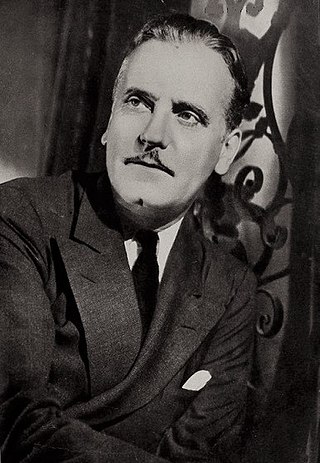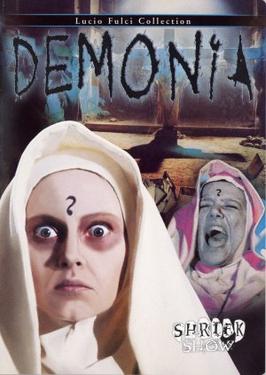
A vampire is a mythical creature that subsists by feeding on the vital essence of the living. In European folklore, vampires are undead humanoid creatures that often visited loved ones and caused mischief or deaths in the neighbourhoods which they inhabited while they were alive. They wore shrouds and were often described as bloated and of ruddy or dark countenance, markedly different from today's gaunt, pale vampire which dates from the early 19th century. Vampiric entities have been recorded in cultures around the world; the term vampire was popularized in Western Europe after reports of an 18th-century mass hysteria of a pre-existing folk belief in Southeastern and Eastern Europe that in some cases resulted in corpses being staked and people being accused of vampirism. Local variants in Southeastern Europe were also known by different names, such as shtriga in Albania, vrykolakas in Greece and strigoi in Romania, cognate to Italian 'Strega', meaning Witch.

I Am Legend is a 1954 post-apocalyptic horror novel by American writer Richard Matheson that was influential in the modern development of zombie and vampire literature and in popularizing the concept of a worldwide apocalypse due to disease. The novel was a success and was adapted into the films The Last Man on Earth (1964), The Omega Man (1971), and I Am Legend (2007). It was also an inspiration for George A. Romero's Night of the Living Dead (1968).

Morbius the Living Vampire is a fictional character appearing in American comic books published by Marvel Comics. Created by writer Roy Thomas and originally designed by penciler Gil Kane, he debuted as a tragic, sympathetic adversary of the superhero Spider-Man in The Amazing Spider-Man #101. For years, Morbius frequently clashed with Spider-Man and other superheroes while occasionally regaining his reason and helping those he regarded as allies. The 1992 Marvel Comics "Rise of the Midnight Sons" crossover event then revived and revised several horror-themed Marvel characters to present them as lead protagonists in new titles. The event launched the new series Morbius the Living Vampire, which ran from 1992 to 1995 and now presented the title character as a lethal anti-hero and vigilante. After the cancellation of this series, various stories shifted back and forth between portraying Morbius as a conflicted and brutal anti-hero or a tragic character subject to episodes of madness and murder.

House of Dark Shadows is a 1970 American feature-length horror film produced and directed by Dan Curtis, based on his Dark Shadows television series. In this film expansion, vampire Barnabas Collins searches for a cure for vampirism so he can marry a woman who resembles his long-lost fiancée Josette.

The Batman vs. Dracula is a 2005 American direct-to-video animated superhero-horror film based on The Batman television series. The film is a crossover with the 1897 horror novel Dracula. The film was released to DVD on October 18, 2005, and made its television debut on Cartoon Network's Toonami block on October 22. In the film, the Batman races to save Gotham City from his most challenging foe yet: the legendary vampire Count Dracula, who hatches a plot together to enslave the city and create a race of vampires along with his two new henchmen, the Penguin and the Joker. It was released on DVD as a tie-in with the live action Batman Begins.

A Return to Salem's Lot is a 1987 American vampire film co-written and directed by Larry Cohen and starring Michael Moriarty, Andrew Duggan, Samuel Fuller, Evelyn Keyes, and June Havoc. A theatrical sequel to the 1979 miniseries Salem's Lot, the film follows an anthropologist and his son who encounter supernatural incidents and vampirism in the small town of Jerusalem's Lot.
Petar Blagojević was a Serbian peasant who was believed to have become a vampire after his death and to have killed nine of his fellow villagers. The case was the earliest, one of the most sensational and most well documented cases of vampire hysteria. It was described in the report of Imperial Provisor Ernst Frombald, an official of the Austrian monarchy, who witnessed the staking of Blagojević.

My Best Friend Is a Vampire is a 1987 American comedy horror film directed by Jimmy Huston. The story revolves around a newly made vampire who is trying to live as a "good" vampire and not feed on humans. Meanwhile, his parents have noticed changes in their son's lifestyle, but are under the mistaken impression that he is a closeted homosexual. Jeremy is played by Robert Sean Leonard with René Auberjonois as Jeremy's vampire guidance counselor and David Warner as a vampire hunter. The film's themes include prejudice, identity, gender roles, and adolescence.

Lust for a Vampire, also known as Love for a Vampire or To Love a Vampire, is a 1971 British Hammer Horror film directed by Jimmy Sangster, starring Ralph Bates, Barbara Jefford, Suzanna Leigh, Michael Johnson, and Yutte Stensgaard. It was given an R rating in the United States for some violence, gore, strong adult content and nudity. It is the second film in the Karnstein Trilogy, loosely based on the 1872 Sheridan Le Fanu novella Carmilla. It was preceded by The Vampire Lovers (1970) and followed by Twins of Evil (1971). The three films do not form a chronological development, but use the Karnstein family as the source of the vampiric threat and were somewhat daring for the time in explicitly depicting lesbian themes.

Captain Kronos – Vampire Hunter is a 1974 British swashbuckling action horror film, written and directed by Brian Clemens, produced by Clemens and Albert Fennell for Hammer Film Productions, and starring Horst Janson, John Carson, Shane Briant, and Caroline Munro. The music score was composed by Laurie Johnson, supervised by Philip Martell. Shot in 1972, but belatedly released on 7 April 1974, the film was intended as the first in a series focused on the title character and his companions. Due to the film's violence and sexual subtext, Captain Kronos was rated R in North America. This was Clemens' only film as a director.

The Vampire Bat is a 1933 American Pre-Code horror film directed by Frank R. Strayer and starring Lionel Atwill, Fay Wray, Melvyn Douglas, and Dwight Frye.

Raphael Kuhner Wuppermann, known professionally as Ralph Morgan, was a Hollywood stage and film character actor, and union activist. He was a brother of actor Frank Morgan as well as the father of actress Claudia Morgan.

Batman: Castle of the Bat is a DC Comics Elseworlds special published in 1994, written by Jack C. Harris with art by Bo Hampton as the artist and Tracy Hampton-Munsey as the letterer.

Andrée Melly was an English actress.

Legends of vampires have existed for millennia; cultures such as the Mesopotamians, Hebrews, ancient Greeks, and Romans had tales of demonic entities and blood-drinking spirits which are considered precursors to modern vampires. Despite the occurrence of vampire-like creatures in these ancient civilizations, the folklore for the entity known today as the vampire originates almost exclusively from early 18th-century Central Europe, particularly Transylvania as verbal traditions of many ethnic groups of the region were recorded and published. In most cases, vampires are revenants of evil beings, suicide victims, or witches, but can also be created by a malevolent spirit possessing a corpse or a living person being bitten by a vampire themselves. Belief in such legends became so rife that in some areas it caused mass hysteria and even public executions of people believed to be vampires.

Lawrence StewartTalbot, also known as the Wolf Man, is a title character of the 1941 Universal film The Wolf Man and its sequels, created by Curt Siodmak. He was portrayed by Lon Chaney Jr. In the 2010 remake of the film, he is portrayed by Benicio del Toro. The Wolf Man was part of the Universal Classic Monsters ensemble.

Demonia is a 1990 Italian horror film co-written and directed by Lucio Fulci.

Vampire is a 2011 dramatic film written, directed and produced by Shunji Iwai, who also serves as the film's editor, composer and cinematograher and starring Kevin Zegers as a teacher who believes himself to be a blood-drinking vampire. It was first released on January 22, 2011 at the Sundance Film Festival and is the first film he has directed in English.

















